www.industry-asia-pacific.com
03
'25
Written on Modified on
Corrosion in Industry: Risks, Remedies, and Revenues
From catastrophic failures to billion-dollar solutions, the global corrosion protection market is at a critical juncture – balancing challenges with unprecedented opportunities.
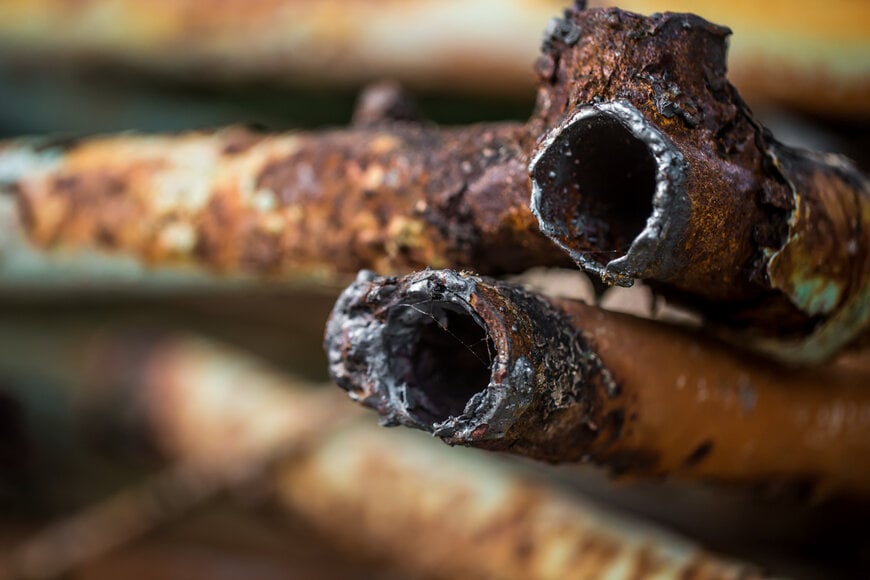
Corrosion works slowly but diligently, draining resources and jeopardising safety. Photo by Freepik
Corrosion, often described as the ‘silent enemy’, is actually the ‘silent thief’ – stealing profits from industry balance sheets. Operating invisibly but relentlessly, corrosion slowly but surely weakens metals, concrete, and composites, invariably resulting in costly failures. Unlike sudden accidents, corrosion weaves its way diligently, draining resources and jeopardising safety in every sector – from oil pipelines and offshore platforms to bridges, aeroplanes, automobiles, ships, power plants, and machinery and equipment. According to global studies, corrosion costs the world economy trillions of dollars annually, making it not just an engineering headache but a profound economic and social concern. What makes the issue more troubling is that much of this damage is preventable.
Just three examples make it amply clear how corrosion, if left untreated, can cause major disasters on land, air and at sea:
In December 1984, methyl isocyanate (MIC), a highly toxic gas leaked from a pesticide plant in Bhopal, India, killing 2500 persons in the immediate aftermath, and an estimated 10,000 over the next few months, besides causing debilitating health issues to over half a million residents of the town. Along with a series of maintenance and safety issues, corrosion was identified as having played a significant role in what is now considered one of the world’s worst industrial accidents. It was found that to save on costs, stainless steel pipes were replaced by carbon steel, which had rusted, and the plant’s flare tower, designed to burn off any escaping MIC, was also out of service due to corroded piping.
In October 1992, a Boeing 747-200F freighter of an Israeli cargo airline, El Al Flight 1862, crashed shortly after take-off from Amsterdam Schiphol Airport, around 6.30 pm. The aircraft crashed into an apartment building, killing all 4 persons on board including three crew members, and 43 people on ground. Investigators identified the cause of the crash as separation of both the engines on the starboard wing due to metal fatigue in the engine pylon – caused by pitting corrosion – leading to a loss of control. The accident led to significant changes in the design of the engine struts of the Boeing 747.
In December 1999, the MV Erika, an oil tanker of single-hull design, broke in two during a storm in the Bay of Biscay, France. The accident resulted in polluting almost 400 km of French coastline, causing unprecedented damage to the marine environment, later described as one of the biggest environmental disasters of recent years. Initially there were doubts expressed about corrosion being the cause, but a French appeals court in March 2010 confirmed the ruling stating that ‘the accident was a direct consequence of corrosion on the boat directly related to the lack of servicing’.
This article explores the scale of the problem, its real-world consequences, the solutions available, and the ecosystem of vendors working to combat it.
Scale & size of the problem
Corrosion is not merely a nuisance or a maintenance issue; it is a serious global economic and safety challenge. According to the widely cited 2013 study by the National Association of Corrosion Engineers (NACE), known as the NACE International IMPACT study, the worldwide cost of corrosion was estimated to be over US$2.5 trillion annually, representing nearly 3-4% of global GDP. NACE is now known as Association for Materials Protection and Performance (AMPP).
A more recent study by the World Corrosion Organization (WCO), a non-governmental, non-profit charitable organisation of the United Nations (UN) puts the total cost of corrosion as US $2.2 trillion, which is around 3% of the world’s GDP. These figures are staggering, and indicate that corrosion is not just an engineering problem but a macroeconomic issue with far-reaching implications. More importantly, studies suggest that 15-35% of these costs could be avoided if industries consistently applied existing corrosion management best practices.
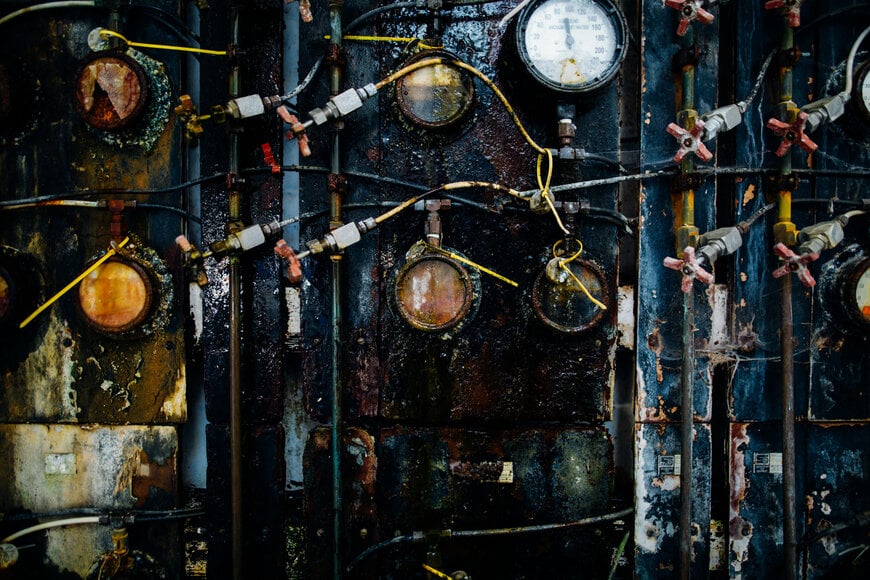
Corrosion is not merely a nuisance or a maintenance issue – it can lead to disastrous consequences. Photo by Kelly on Pexels
Industry-wise breakdown
Corrosion impacts different industry sectors in distinct ways:
Corrosion, often described as the ‘silent enemy’, is actually the ‘silent thief’ – stealing profits from industry balance sheets. Operating invisibly but relentlessly, corrosion slowly but surely weakens metals, concrete, and composites, invariably resulting in costly failures. Unlike sudden accidents, corrosion weaves its way diligently, draining resources and jeopardising safety in every sector – from oil pipelines and offshore platforms to bridges, aeroplanes, automobiles, ships, power plants, and machinery and equipment. According to global studies, corrosion costs the world economy trillions of dollars annually, making it not just an engineering headache but a profound economic and social concern. What makes the issue more troubling is that much of this damage is preventable.
Just three examples make it amply clear how corrosion, if left untreated, can cause major disasters on land, air and at sea:
In December 1984, methyl isocyanate (MIC), a highly toxic gas leaked from a pesticide plant in Bhopal, India, killing 2500 persons in the immediate aftermath, and an estimated 10,000 over the next few months, besides causing debilitating health issues to over half a million residents of the town. Along with a series of maintenance and safety issues, corrosion was identified as having played a significant role in what is now considered one of the world’s worst industrial accidents. It was found that to save on costs, stainless steel pipes were replaced by carbon steel, which had rusted, and the plant’s flare tower, designed to burn off any escaping MIC, was also out of service due to corroded piping.
In October 1992, a Boeing 747-200F freighter of an Israeli cargo airline, El Al Flight 1862, crashed shortly after take-off from Amsterdam Schiphol Airport, around 6.30 pm. The aircraft crashed into an apartment building, killing all 4 persons on board including three crew members, and 43 people on ground. Investigators identified the cause of the crash as separation of both the engines on the starboard wing due to metal fatigue in the engine pylon – caused by pitting corrosion – leading to a loss of control. The accident led to significant changes in the design of the engine struts of the Boeing 747.
In December 1999, the MV Erika, an oil tanker of single-hull design, broke in two during a storm in the Bay of Biscay, France. The accident resulted in polluting almost 400 km of French coastline, causing unprecedented damage to the marine environment, later described as one of the biggest environmental disasters of recent years. Initially there were doubts expressed about corrosion being the cause, but a French appeals court in March 2010 confirmed the ruling stating that ‘the accident was a direct consequence of corrosion on the boat directly related to the lack of servicing’.
This article explores the scale of the problem, its real-world consequences, the solutions available, and the ecosystem of vendors working to combat it.
Scale & size of the problem
Corrosion is not merely a nuisance or a maintenance issue; it is a serious global economic and safety challenge. According to the widely cited 2013 study by the National Association of Corrosion Engineers (NACE), known as the NACE International IMPACT study, the worldwide cost of corrosion was estimated to be over US$2.5 trillion annually, representing nearly 3-4% of global GDP. NACE is now known as Association for Materials Protection and Performance (AMPP).
A more recent study by the World Corrosion Organization (WCO), a non-governmental, non-profit charitable organisation of the United Nations (UN) puts the total cost of corrosion as US $2.2 trillion, which is around 3% of the world’s GDP. These figures are staggering, and indicate that corrosion is not just an engineering problem but a macroeconomic issue with far-reaching implications. More importantly, studies suggest that 15-35% of these costs could be avoided if industries consistently applied existing corrosion management best practices.

Corrosion is not merely a nuisance or a maintenance issue – it can lead to disastrous consequences. Photo by Kelly on Pexels
Industry-wise breakdown
Corrosion impacts different industry sectors in distinct ways:
- Oil & gas: The oil and gas sector is highly vulnerable to internal corrosion, thanks to the constant exposure of pipelines, subsea installations, and refineries to water, carbon dioxide, hydrogen sulfide, and microbial activity. If left unchecked, this leads to leaks, fires, or ruptures that could lead to catastrophic consequences.
- Shipping & offshore: The extremely harsh and salty marine environment makes shipping and offshore structures equally vulnerable to corrosion of hulls, ballast tanks, and external structures made of steel and other metals, leading to safety hazards, structural failure, and high maintenance costs..
- Power generation: Equipment like steam turbines, condensers, and cooling towers is susceptible to corrosion due to harsh operating conditions, including extreme temperatures and high humidity, which accelerate chemical degradation processes.
- Water & wastewater infrastructure: Underground pipelines and treatment plants face constant degradation, resulting in leaks, service interruptions, and public health risks.
- Civil infrastructure: Bridges, highways, and reinforced concrete structures often deteriorate prematurely due to rebar corrosion, shortening their design life and raising rehabilitation costs.
It may thus be observed that corrosion is not just confined to heavy industries but also touches everyday life – from clean water access to reliable electricity.
Types of corrosion
Corrosion is an all-encompassing term for material deterioration, but in reality, there are many distinct types of corrosion that occur in industry. These range from general metallic corrosion to corrosion caused by specific reasons such as location, contact surface, dissimilar metals, exposure to friction, stress and acids, etc. A brief summary of each type follows:
Types of corrosion
Corrosion is an all-encompassing term for material deterioration, but in reality, there are many distinct types of corrosion that occur in industry. These range from general metallic corrosion to corrosion caused by specific reasons such as location, contact surface, dissimilar metals, exposure to friction, stress and acids, etc. A brief summary of each type follows:
- General/uniform corrosion – The most common type, leading to an even loss of metal across the entire surface, like rusting. This happens due to direct chemical or electrochemical attack that
- Pitting corrosion – This is a highly localised form of corrosion where small pits or holes are formed in the metal. It is normally caused by various factors, with chloride ions acting as the common catalyst.
- Crevice corrosion – Occurs in narrow gaps or under deposits where a corrosion cell can form due to differential aeration. It is caused when moisture enters a crevice, depleting oxygen and creating a chemical imbalance, resulting in corrosion of surrounding metal.
- Galvanic corrosion – This is corrosion caused when two dissimilar metals are in electrical contact in the presence of an electrolyte. When an electrochemical cell forms between the two metals, the more active metal starts corroding, like steel fasteners in aluminum components.
- Intergranular corrosion – This is mostly occurring along the grain boundaries of a metal. The reason is, the grain boundaries have different chemical properties than the grain centres, making them more susceptible to attack in certain environments.
- Stress corrosion cracking (SCC) – This is a combination of tensile stress and a corrosive environment that causes cracks. Even minor stress, when combined with a corrosive environment, causes cracks which then spread.
- Corrosion fatigue – Similar to SCC, this is caused by the simultaneous action of cyclic or repeated stress and a corrosive environment. Repeated stress reduces the metal's fatigue limit, allowing fractures to occur at lower stress levels than with fatigue alone.
- Fretting corrosion – This is damage caused by repeated, small-scale relative motion between two surfaces. The continuous rubbing action wears away protective coatings or the surface itself, exposing fresh metal to the environment.
Besides these major types of corrosion, there are a few more:
- Erosion corrosion – Caused by the deterioration of metals and alloys due to relative movement between metal surfaces and corrosive fluids.
- Cavitation corrosion – A particular form of erosion caused by the ‘implosion’ of gas bubbles on a metal surface which cause pits on the metal surface.
- Flow-assisted corrosion – Occurs when a protective layer of oxide on a metal surface is dissolved or removed by wind or water.
- High-temperature corrosion – Oxidation, sulfidation, or carbonisation, or from fuels that contain vanadium.
- Soil corrosion – Caused when carbon steel is exposed to moisture and oxygen in the surrounding soil.
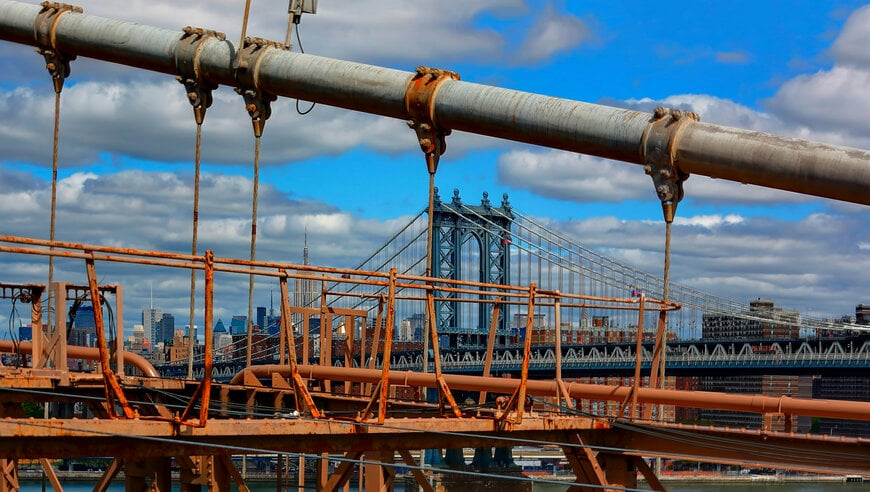
All steel structures – onshore or offshore – are vulnerable to corrosion. Photo by Ricardo Gomez Angel on Unsplash
Countering corrosion with technology
The real irony of the whole problem of corrosion is that much of the harm it causes can be prevented with proper precautions and low cost remedial measures. Technologies used to combat corrosion include coatings, cathodic protection, corrosion inhibitors, material selection, and environmental control methods, as elaborated below:.
1. Coatings are of various types and among the most commonly used methods:
- Barrier coatings – These physically block corrosive elements from reaching the metal surface.
- Paint and primers – Organic coatings that create a protective film on metal surfaces.
- Metallic coatings – A layer of another metal, like zinc (galvanizing), nickel, or chrome.
- Organic coatings – These comprise epoxy, urethane, and vinyl-based materials.
- Powder coatings – Electrostatically applied powder cured into a durable layer on the metal.
- Anodizing – Forming a thicker, protective oxide layer on metals like aluminum.
- Phosphating – Creating a phosphate layer that enhances paint adhesion and corrosion resistance.
- Ceramic coatings – For high-temperature and chemical resistance.
2. Cathodic protection is a method that uses an electrical current or a sacrificial anode (a more reactive metal) to corrode instead of the protected metal structure.
3. Corrosion inhibitors are of two types:
3. Corrosion inhibitors are of two types:
- Chemical inhibitors – These are chemicals that reduce the electrochemical reactions causing corrosion, often applied to the metal surface or introduced into the fluid.
- Vapour corrosion inhibitors (VCIs) – Molecules that diffuse from packaging materials to metal surfaces, forming a protective layer.
4. Material selection and design is more of a precautionary measure that helps prevent corrosion and can be achieved by the following ways:
- Alloys – By use of corrosion-resistant alloys like high-entropy alloys or making metals intrinsically less prone to corrosion.
- Non-corrosive materials – Selecting materials that are inherently resistant to corrosion.
- Alternated designs – Avoiding design features like cracks or crevices where moisture and debris can accumulate.
5. Environmental control is achieved by dehumidification – reducing humidity in enclosed spaces to limit the presence of water. Alternatively, atmospheric control can be used by purging with inert gases like nitrogen to remove oxygen and prevent reactions.
6. Advanced and emerging technologies include:
6. Advanced and emerging technologies include:
- Additive manufacturing (3D printing) – Facilitate building complex components with precisely controlled, corrosion-resistant materials and structures.
- Graphene-based coatings – Utilise graphene's exceptional strength and impermeability for superior protection.
- Artificial intelligence (AI) and machine learning (ML) – Predict corrosion risks, optimising maintenance, and developing better mitigation strategies.
Going forward, the advanced and emerging technologies will play a greater role in corrosion control.
Current global market value of corrosion protection solutions
The global market for corrosion protection coatings alone is projected to exceed US$30 billion by 2030, growing steadily with demand from marine, automotive, and oil & gas industries. Another report mentions the value of the global corrosion protection coatings and acid proof lining market at US$53.1 billion in 2025, and estimates it to reach US$99.8 billion by 2035. Similar growth is evident in cathodic protection services, corrosion monitoring devices, and specialty chemicals such as inhibitors. This indicates that while the corrosion problem is massive, it is also creating a robust ecosystem of technologies and service providers dedicated to controlling it.
The gist of it is, corrosion inflicts damage worth trillions of dollars every year, reduces industrial productivity, and threatens both human safety and environmental health. Some proactive measures and a lot of caution can prevent this to a large extent. The challenge for industry is not the absence of solutions but lack of systematic adoption.
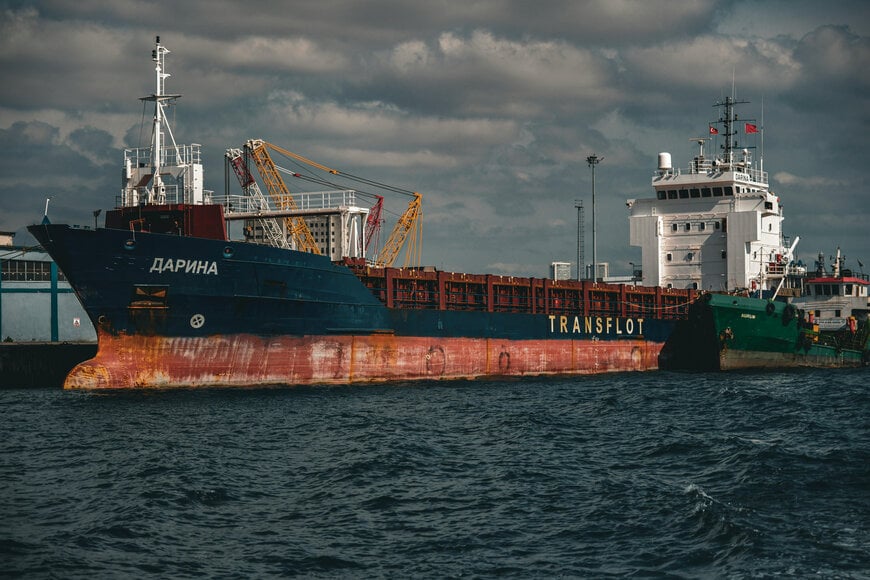
Corrosion can cause unprecedented damage to the marine environment. Photo by Alperen Bozkurt – Pexels
Top 10 companies
There are countless companies offering corrosion control products and technologies worldwide, including global market leaders like AkzoNobel, PPG Industries, and Jotun A/S, alongside numerous small and regional players. The total number is vast and impossible to pinpoint due to the diverse scope of corrosion control solutions, which range from specialised coatings and inhibitors to cathodic protection systems and advanced materials. However, the following companies are widely recognised as the Global Top 10:
PPG Industries offers a wide range of anti-corrosion products including primers like PPG PRIMERON™ for steel and aluminum, powder coatings such as PPG ENVIROCRON and CORAFLON®, electrocoats like POWERCRON®, intumescent coatings like PPG STEELGUARD® for passive fire protection, and specialised sealants for the aerospace industry. They also provide pretreatments, liquid coatings, and coatings for specific applications like architectural metals and transportation.
AkzoNobel offers a wide range of anti-corrosion products including the Interpon powder coatings (e.g., Interpon A5000 for commercial vehicles, Interpon Redox Plus for substrates), the Intergard range of epoxy primers and coatings (e.g., Intergard 475HS), and specialised primers like COILTEC CF for construction and Resicoat epoxy powder coatings for potable water applications. They also provide advanced solutions for the aerospace sector, such as chromate-free primers like Aerodur 2100 MgRP and Aerodur 2111, and offer lower VOC options like Intercure 4500 for industrial applications.
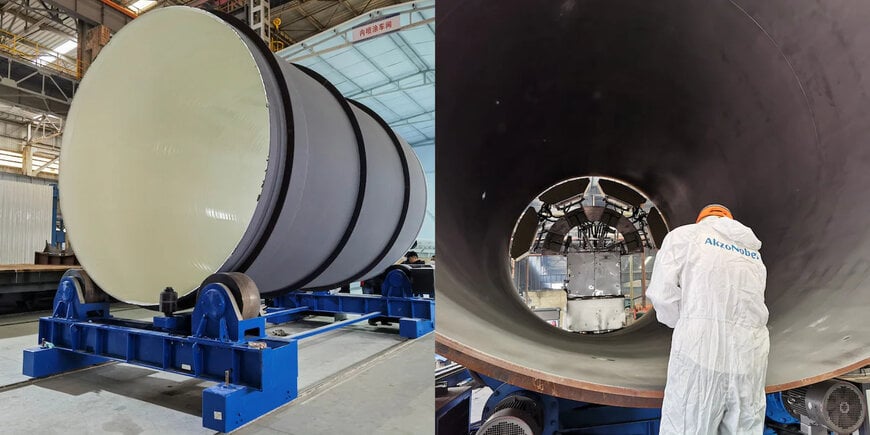
AkzoNobel powder coatings for drinking water pipelines and valves. Image credit: AkzoNobel
The Sherwin-Williams Company offers various anti-corrosion products under brand names like Macropoxy®, Zinc Clad®, Dura-Plate®, Heat-Flex®, and FIRETEX®. These products are epoxy, zinc-rich, polyurethane, and polyaspartic coatings designed for structural steel, industrial maintenance, and marine applications, providing long-term asset protection against corrosion and weathering.
Axalta Coating Systems offers a wide range of anti-corrosion products under brands like Corroless (for VCI and rust-stabilising primers), Alesta® ZeroZinc (thermosetting powders), Plascoat® and Abcite® (thermoplastic powders), AquaEC™ (electrocoats), and Ganicin® (zinc-rich primers), designed to protect steel and other metals in various harsh environments through different technologies.
Jotun offers a wide range of anti-corrosion products under categories like primers, topcoats, and coatings for specific applications, including the Barrier zinc primer for severe conditions, the Hardtop polysiloxane topcoat for durable finishes, and specialised solutions like Penguard epoxy coatings, Jotaguard epoxy, and SteelMaster intumescent coatings, all designed to protect ships, buildings, and infrastructure from corrosion.
Hempel offers a range of anti-corrosion products. Its innovative Hempadur Avantguard technology combines galvanic, barrier, and inhibitor effects for longer-lasting protection on steel structures. Other anti-corrosion products include Hempadur primers containing zinc phosphate, which provide robust, hard, and tough coatings resistant to abrasion and seawater. Then there is the Hemudur range that features waterborne epoxy primers like Hemudur 18500 for steel and Hemudur Finish 48582 for floors, providing strong corrosion prevention and good chemical resistance.
RPM International offers anti-corrosion products through its subsidiaries, primarily under the Rust-Oleum brand, which includes products like Stops Rust and High Performance coatings, and the industrial brand Carboline, known for protective coatings in commercial and industrial applications. Other relevant brands include Tremco for construction and maintenance sealants and Stonhard for industrial flooring solutions.
BASF offers various anti-corrosion products, including Acronal® PRO emulsions for water-based industrial metal primers and coatings, Joncryl® PRO resins for direct-to-metal coatings, Alcophor® AC as a tannin-based corrosion inhibitor additive for paints, and Basocorr™ E corrosion inhibitors for oil and gas applications. They also provide specialised Corrosion Inhibitors for fuel and lubricant applications, and technologies for creating Corrosion-Resistant Coating Materials.
Nippon Paint offers a range of anti-corrosion products including high-performance HI-PON 20-04 STE 80 epoxy mastic and the environmentally friendly, water-based Nippon Corrosion Resistant Solution for ferrous substrates. They also provide specialised coatings like the NOA series for marine applications, Red Oxide Metal Primer for metal surfaces, and various zinc-rich primers for sacrificial protection.
Kansai Paint offers anti-corrosion products in a wide range across its brands. This includes the THERMOTECT series for Corrosion Under Insulation (CUI) and high-temperature applications; the EPOMARINE series for marine environments; Kansai Helios epoxy primers (O-EP series) for industrial steel; and Kansai Nerolac's TAKATA QUANTUM series for marine fuel efficiency. The coatings are designed for industries like energy, transportation, and general industrial sectors, providing protection against corrosion for various steel structures, bridges, and industrial plants.
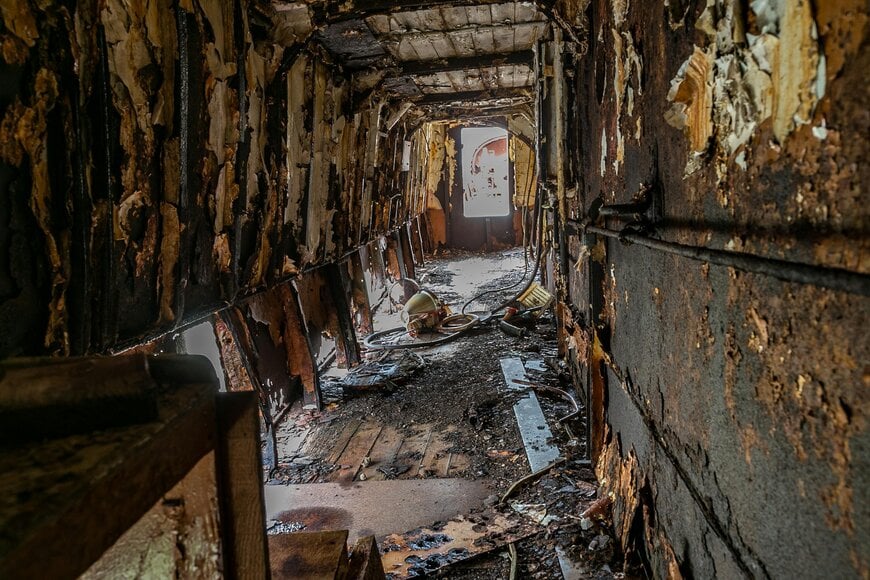
Total negligence of steel structures can result in total destruction of assets. Photo by Wendelin Jacober – Pexels
Summing up
Everyone on this planet is impacted by corrosion. Corrosion is all pervading – be it in industrial plants, infrastructure like buildings and bridges, and various modes of transport – and has a direct bearing on human safety. If ignored, corrosion can lead to disastrous consequences. Because it is a natural process of metal and material degradation, corrosion cannot be entirely eliminated. However, the harmful effects of corrosion can be significantly reduced, managed, and in a few cases, even neutralised. This can be achieved by using various methods elaborated in this article in preceding paragraphs.
Technologies to mitigate the harmful effects of corrosion are available. All it now needs is a proactive approach and an integrated strategy. A combination of material selection, protective coatings, advanced inhibitors, and diligent monitoring of assets can go a long way in extending their lifespan and ensuring operational integrity. Effective corrosion control is indispensable for industrial sustainability, safety, and economic viability.
Current global market value of corrosion protection solutions
The global market for corrosion protection coatings alone is projected to exceed US$30 billion by 2030, growing steadily with demand from marine, automotive, and oil & gas industries. Another report mentions the value of the global corrosion protection coatings and acid proof lining market at US$53.1 billion in 2025, and estimates it to reach US$99.8 billion by 2035. Similar growth is evident in cathodic protection services, corrosion monitoring devices, and specialty chemicals such as inhibitors. This indicates that while the corrosion problem is massive, it is also creating a robust ecosystem of technologies and service providers dedicated to controlling it.
The gist of it is, corrosion inflicts damage worth trillions of dollars every year, reduces industrial productivity, and threatens both human safety and environmental health. Some proactive measures and a lot of caution can prevent this to a large extent. The challenge for industry is not the absence of solutions but lack of systematic adoption.

Corrosion can cause unprecedented damage to the marine environment. Photo by Alperen Bozkurt – Pexels
Top 10 companies
There are countless companies offering corrosion control products and technologies worldwide, including global market leaders like AkzoNobel, PPG Industries, and Jotun A/S, alongside numerous small and regional players. The total number is vast and impossible to pinpoint due to the diverse scope of corrosion control solutions, which range from specialised coatings and inhibitors to cathodic protection systems and advanced materials. However, the following companies are widely recognised as the Global Top 10:
PPG Industries offers a wide range of anti-corrosion products including primers like PPG PRIMERON™ for steel and aluminum, powder coatings such as PPG ENVIROCRON and CORAFLON®, electrocoats like POWERCRON®, intumescent coatings like PPG STEELGUARD® for passive fire protection, and specialised sealants for the aerospace industry. They also provide pretreatments, liquid coatings, and coatings for specific applications like architectural metals and transportation.
AkzoNobel offers a wide range of anti-corrosion products including the Interpon powder coatings (e.g., Interpon A5000 for commercial vehicles, Interpon Redox Plus for substrates), the Intergard range of epoxy primers and coatings (e.g., Intergard 475HS), and specialised primers like COILTEC CF for construction and Resicoat epoxy powder coatings for potable water applications. They also provide advanced solutions for the aerospace sector, such as chromate-free primers like Aerodur 2100 MgRP and Aerodur 2111, and offer lower VOC options like Intercure 4500 for industrial applications.

AkzoNobel powder coatings for drinking water pipelines and valves. Image credit: AkzoNobel
The Sherwin-Williams Company offers various anti-corrosion products under brand names like Macropoxy®, Zinc Clad®, Dura-Plate®, Heat-Flex®, and FIRETEX®. These products are epoxy, zinc-rich, polyurethane, and polyaspartic coatings designed for structural steel, industrial maintenance, and marine applications, providing long-term asset protection against corrosion and weathering.
Axalta Coating Systems offers a wide range of anti-corrosion products under brands like Corroless (for VCI and rust-stabilising primers), Alesta® ZeroZinc (thermosetting powders), Plascoat® and Abcite® (thermoplastic powders), AquaEC™ (electrocoats), and Ganicin® (zinc-rich primers), designed to protect steel and other metals in various harsh environments through different technologies.
Jotun offers a wide range of anti-corrosion products under categories like primers, topcoats, and coatings for specific applications, including the Barrier zinc primer for severe conditions, the Hardtop polysiloxane topcoat for durable finishes, and specialised solutions like Penguard epoxy coatings, Jotaguard epoxy, and SteelMaster intumescent coatings, all designed to protect ships, buildings, and infrastructure from corrosion.
Hempel offers a range of anti-corrosion products. Its innovative Hempadur Avantguard technology combines galvanic, barrier, and inhibitor effects for longer-lasting protection on steel structures. Other anti-corrosion products include Hempadur primers containing zinc phosphate, which provide robust, hard, and tough coatings resistant to abrasion and seawater. Then there is the Hemudur range that features waterborne epoxy primers like Hemudur 18500 for steel and Hemudur Finish 48582 for floors, providing strong corrosion prevention and good chemical resistance.
RPM International offers anti-corrosion products through its subsidiaries, primarily under the Rust-Oleum brand, which includes products like Stops Rust and High Performance coatings, and the industrial brand Carboline, known for protective coatings in commercial and industrial applications. Other relevant brands include Tremco for construction and maintenance sealants and Stonhard for industrial flooring solutions.
BASF offers various anti-corrosion products, including Acronal® PRO emulsions for water-based industrial metal primers and coatings, Joncryl® PRO resins for direct-to-metal coatings, Alcophor® AC as a tannin-based corrosion inhibitor additive for paints, and Basocorr™ E corrosion inhibitors for oil and gas applications. They also provide specialised Corrosion Inhibitors for fuel and lubricant applications, and technologies for creating Corrosion-Resistant Coating Materials.
Nippon Paint offers a range of anti-corrosion products including high-performance HI-PON 20-04 STE 80 epoxy mastic and the environmentally friendly, water-based Nippon Corrosion Resistant Solution for ferrous substrates. They also provide specialised coatings like the NOA series for marine applications, Red Oxide Metal Primer for metal surfaces, and various zinc-rich primers for sacrificial protection.
Kansai Paint offers anti-corrosion products in a wide range across its brands. This includes the THERMOTECT series for Corrosion Under Insulation (CUI) and high-temperature applications; the EPOMARINE series for marine environments; Kansai Helios epoxy primers (O-EP series) for industrial steel; and Kansai Nerolac's TAKATA QUANTUM series for marine fuel efficiency. The coatings are designed for industries like energy, transportation, and general industrial sectors, providing protection against corrosion for various steel structures, bridges, and industrial plants.

Total negligence of steel structures can result in total destruction of assets. Photo by Wendelin Jacober – Pexels
Summing up
Everyone on this planet is impacted by corrosion. Corrosion is all pervading – be it in industrial plants, infrastructure like buildings and bridges, and various modes of transport – and has a direct bearing on human safety. If ignored, corrosion can lead to disastrous consequences. Because it is a natural process of metal and material degradation, corrosion cannot be entirely eliminated. However, the harmful effects of corrosion can be significantly reduced, managed, and in a few cases, even neutralised. This can be achieved by using various methods elaborated in this article in preceding paragraphs.
Technologies to mitigate the harmful effects of corrosion are available. All it now needs is a proactive approach and an integrated strategy. A combination of material selection, protective coatings, advanced inhibitors, and diligent monitoring of assets can go a long way in extending their lifespan and ensuring operational integrity. Effective corrosion control is indispensable for industrial sustainability, safety, and economic viability.

